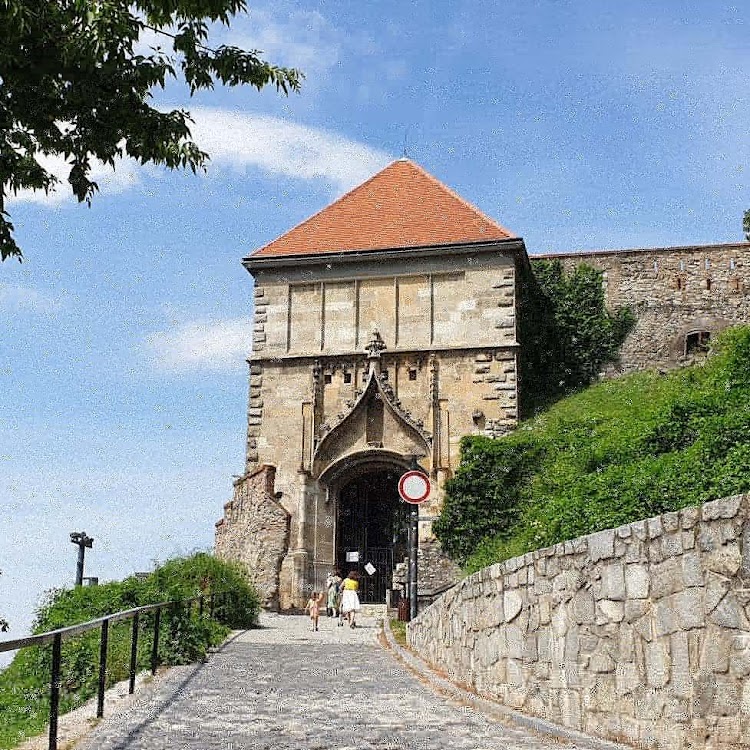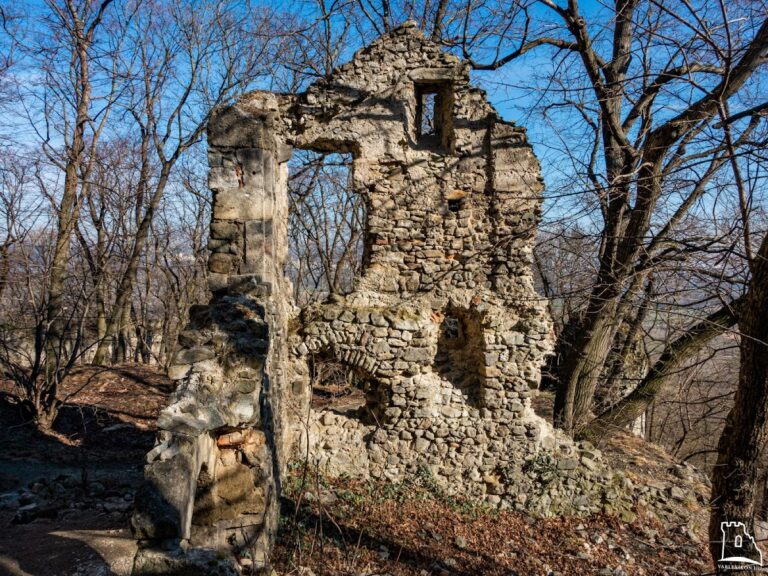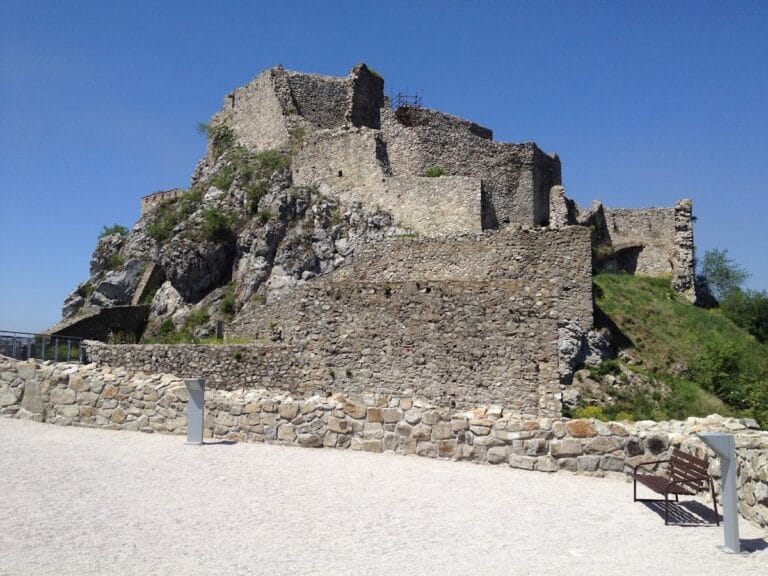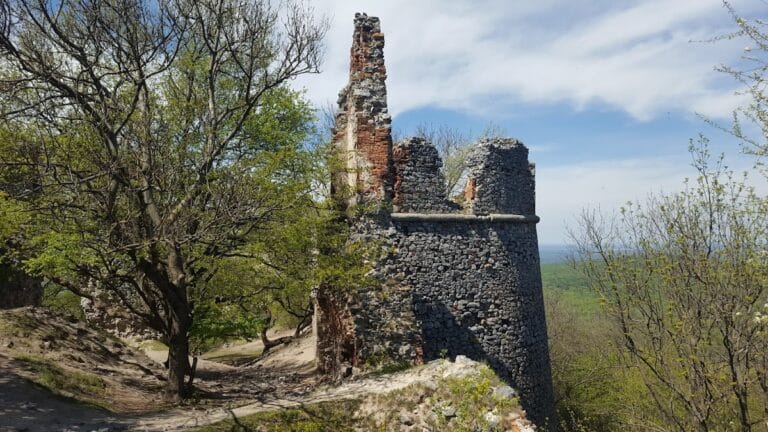Bratislava Castle: A Historic Fortress and Cultural Landmark in Slovakia
Visitor Information
Google Rating: 4.5
Popularity: Very High
Google Maps: View on Google Maps
Official Website: www.visitbratislava.com
Country: Slovakia
Civilization: Medieval European
Remains: Military
History
Bratislava Castle is situated on a prominent hilltop above the left bank of the Danube River in Bratislava, Slovakia. Its origins reach back to the Eneolithic period, with evidence of the Boleráz culture settling the site around 4,500 years ago, establishing it as an important strategic location through many successive civilizations.
During the 9th century, the castle remained a key fortress and religious center within the Great Moravian Empire. The site was enclosed by wooden and earthen ramparts forming a fortified area of approximately 300 by 200 meters. Inside, there stood a two-room wooden palace, a pre-Romanesque basilica with three naves, a cemetery, and buildings supporting the local economy. This fortress played a central role in both defense and spiritual life during that early medieval period.
The castle is first recorded in written sources from the year 907, where it appears in the Salzburg Annals under the name “Brezalauspurch.” It is mentioned in connection with a battle in which Bavarian forces were defeated by Hungarians, highlighting the site’s military importance at that time. Following this, under King Stephen I of Hungary in the early 11th century, the castle was incorporated into a defensive system securing the western frontier of the newly formed kingdom. Enhancements included the installation of a cistern and the replacement of earlier wooden walls with stone fortifications by the late 14th century.
Over the centuries, Bratislava Castle served variously as a royal residence and an administrative hub. It hosted the royal family, regional officials, and played a ceremonial role during coronations. Beginning in 1552, it safeguarded the Hungarian crown jewels for over two centuries, underlining its significance within the kingdom. The castle’s architecture evolved through major rebuilding campaigns: a Gothic reconstruction under Sigismund of Luxembourg in the early 1400s, Renaissance modernization under Ferdinand I during the 16th century, and Baroque remodeling across the 17th and 18th centuries. Notably, Empress Maria Theresa transformed the castle into a refined noble residence, reflecting changing tastes and functions.
After the late 18th century, the castle fell into decline. Beginning in 1783, it was repurposed as a seminary until 1801, after which it became military barracks. The site sustained damage during the Napoleonic Wars when Austrian forces bombarded Bratislava in 1809. A severe fire broke out in 1811, destroying the central palace and other structures. Despite this, the castle remained in military use through both World Wars, with fortifications adapted to modern defense needs.
Following World War II, systematic archaeological and architectural research started in 1953, leading to significant restoration efforts that continued largely until the 1980s. In modern times, Bratislava Castle has witnessed important political events, including the 1968 signing of the law founding the Czechoslovak federation, Slovakia’s 1992 constitution, and the 2005 summit between leaders of the United States and Russia.
Since 1961, the castle has enjoyed protected status as Slovakia’s first national cultural monument. It now houses exhibitions of the Slovak National Museum’s Historical Museum and serves official state and representative functions.
Remains
The castle complex crowns a hill 213 meters above sea level, dominating the Bratislava skyline with its massive rectangular form and four corner towers. The central building, originally the royal palace, showcases an 18th-century Baroque style that incorporates elements from earlier Gothic and Renaissance phases. This structure surrounds a central courtyard and contains a well reaching 80 meters deep, reflecting the site’s long-standing need for secure water supply.
One of the castle’s most historically significant elements is the Crown Tower, which rises to 47 meters and dates from the 13th century. This tower once housed the Hungarian crown jewels between the mid-1500s and the late 1700s, marking it as a secure and symbolic stronghold. The well-preserved Sigismund Gate, dating from the 15th century, served as the main eastern entrance. Its square tower features a ribbed vault with keystones, decorative pinnacles, and a profiled segmental portal, standing today as the best-preserved Gothic element of the castle.
Initially, in the Great Moravian era, the castle was encircled by wide wooden and earthen ramparts measuring about 4.5 meters across and rising 1.6 to 2 meters high within a roughly 300 by 200-meter enclosure. These were later replaced by stone walls during the Gothic period. The western curtain wall reached an impressive thickness of seven meters, with shooting chambers on the first floor for defensive purposes. This evolution reflects the site’s changing military role over several centuries.
Baroque-era modifications in the 1600s introduced new bastions and rondels designed by military engineer Jozef Priami. Among these is the Leopold Gate, constructed in 1674 from quarry stone and marked by a carved cornice topped with three stone spheres and an imperial coat of arms. This gate likely featured a drawbridge, adding to the castle’s defensive capacity during this period.
The grounds also include a three-winged, single-story Baroque building dating to 1764, originally intended for stables, carriage houses, and servants’ quarters. Today, this building functions as offices for the Slovak National Council. On the northern terrace lies a formal garden inspired by the design of Schönbrunn Palace, arranged in the French style with terraced levels, staircases, and a summer house, illustrating the castle’s later use as a noble residence.
Archaeological reconstructions on the eastern terrace reveal foundations from early medieval ecclesiastical structures: a 9th-century three-nave basilica, a 10th-century defensive tower, and an 11th-century Church of the Holy Savior. These remains highlight the site’s religious importance during Great Moravian and subsequent periods.
The courtyard, now known as the Honor Courtyard, was redesigned in the 18th century with symmetrical Baroque architecture. It is flanked by two triumphal gates adorned with sculpted stone trophies and adapted guardhouses, contributing to the castle’s ceremonial appearance.
Exhibition spaces housed within the castle include the Treasury of the Slovak National Museum, which displays archaeological collections such as the Moravian Venus figurine from prehistoric times, alongside historical exhibitions covering Slovakia’s past. The castle’s water supply system, designed by Johann Wolfgang von Kempelen in the 18th century, pumped water from the Danube to the cistern, a vital feature for sustaining life on the hill.
Defensive structures also remain in the form of the Water Tower, located at the hill’s base and first mentioned in records from 1254, as well as integrated medieval and early modern fortifications incorporated into later renovations. Access to the castle is controlled through three main gates today: the Sigismund Gate, which remains the primary entrance; the Vienna or Karl’s Gate, constructed in 1712; and the Mikuláš Gate to the northeast. The Leopold Gate, once prominent, is no longer used for public entry.
The castle’s overall condition is largely restored, with ongoing renovations including work on the Hillebrandt building from 1762. Restoration of the Honor Courtyard was completed in 2010, featuring a statue of King Svatopluk I, continuing the site’s preservation as a cultural and historical landmark.










